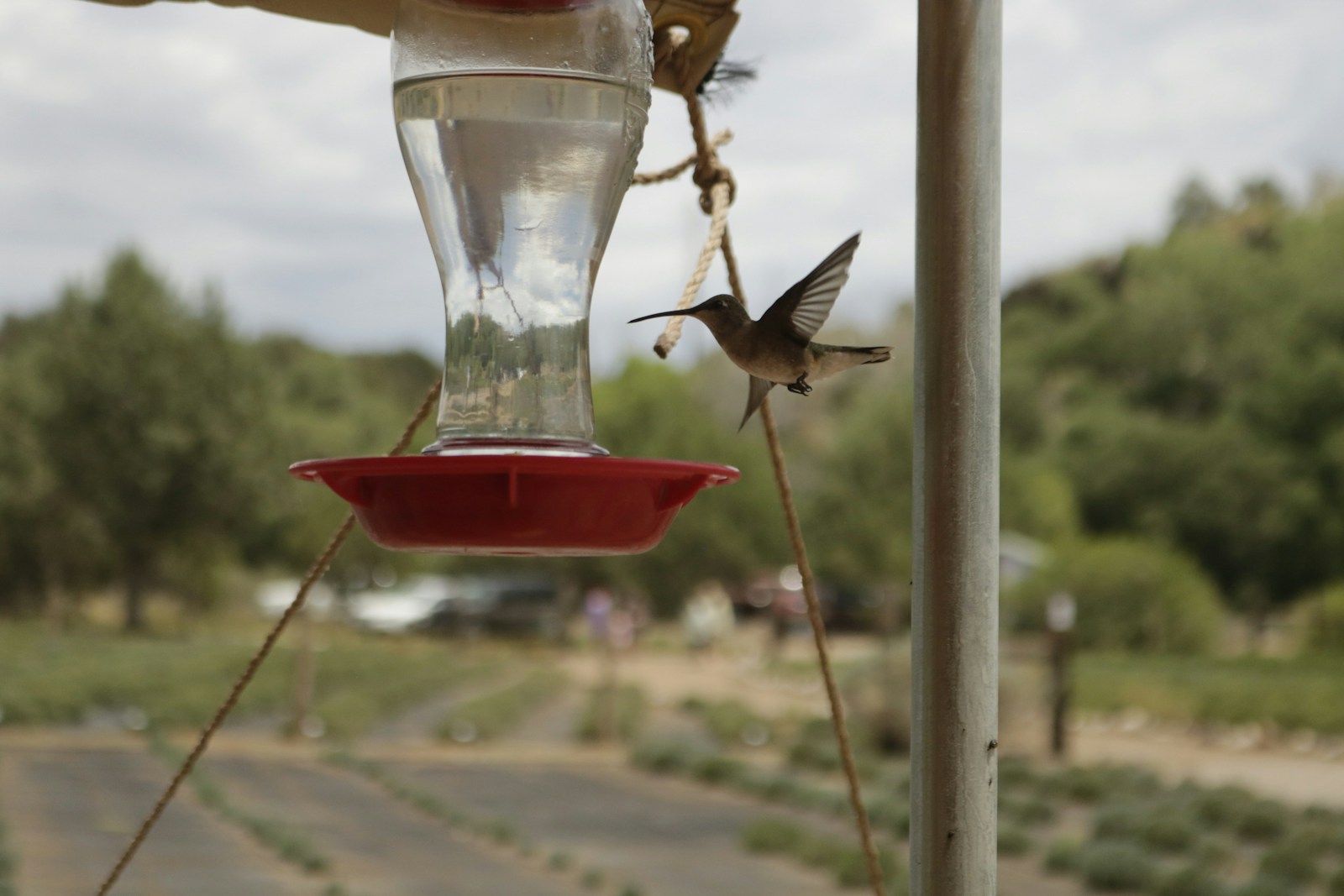Creating a Hummingbird Haven: True Stories & Expert Tips
Crafting the perfect sanctuary for these jewels of nature involves more than just hanging a feeder. Join us on a journey through the lessons learned by passionate bird enthusiasts, enhanced with some extra tips of my own.
Finding the Perfect Spot for Hummingbird Feeders
“After moving to the north, my faithful feeder that was always bustling with activity in South Seattle suddenly became a ghost town. It dawned on me that location is everything.”
Michele learned the hard way that hummingbirds are particular about where they feed. A feeder’s visibility and safety are paramount. Ensuring your feeder is in a quiet, sheltered area but still in plain view can make all the difference. Consider placing feeders near native flowers or shrubs to provide a safe haven for hummingbirds to retreat quickly if needed.
Hummingbirds like Clean Feeders
“A hidden moldy patch inside my feeder was turning away my feathered friends. A thorough cleaning brought them back.”
Linda’s story underscores the importance of meticulous feeder maintenance. Hummingbirds have an acute sense of taste and can detect even minor traces of mold or fermentation. Regularly disassemble and clean your feeder using a vinegar solution, focusing on hard-to-reach areas. This practice not only invites more hummingbirds but also ensures their health and safety.
The Perfect Nectar Recipe
“I was perplexed when hummingbirds hesitated at my feeder. Adjusting my nectar to the 4:1 water-to-sugar ratio was the game-changer I needed.”
Paul discovered the critical balance of making nectar that closely mimics the natural sugar concentration found in flowers. To keep hummingbirds coming back, dissolve one part white sugar in four parts boiled water. Avoid using honey or artificial sweeteners, as these can be harmful to hummingbirds. Always let the mixture cool before filling the feeder.
Strategic Feeder Placement
“After observing the hummingbirds’ flight paths, I repositioned my feeder away from the bustling activity of larger birds. Success!”
Dave’s experience highlights the importance of observing hummingbird behavior. Positioning feeders in a spot that’s both easily accessible and safe from predators, including aggressive larger birds, encourages visits. Consider the line of sight to the feeder and minimize obstructions for an easy approach.
Enhancing the Garden Appeal
“Incorporating a mix of native flowering plants not only beautified my garden but also created a natural dining hall for hummingbirds.”
Steve’s garden became a hummingbird hotspot by offering a variety of nectar sources. Planting flowers that bloom at different times of the year ensures a steady food supply. Plants like salvia, bee balm, and zinnias are particularly attractive to hummingbirds. Adding a water feature can also provide a spot for them to bathe and drink.
Supporting Winter Residents
“Witnessing a hummingbird brave a snowy day to feed was a reminder of their resilience and the importance of year-round support.”
Hummingbirds in colder regions rely heavily on feeders, especially during early spring or late fall when natural food sources are scarce. Ensuring your feeder is accessible and not frozen is crucial during these times. Consider using a feeder heater or placing the feeder in a spot that gets ample winter sunlight to prevent freezing. Additionally, maintaining a clean and full feeder can be a lifeline for hummingbirds during the winter months.”
Creating a Safe Haven
“I realized that safety was a top priority for my hummingbird visitors after noticing they avoided the feeder whenever there was too much movement or noise around.”
Jeninca’s observation teaches us that hummingbirds prefer a peaceful environment to feed. To make your garden more inviting, position feeders away from high-traffic areas and ensure there’s ample space for the birds to escape predators. Providing perches in the form of nearby bushes or trees gives them a place to rest and survey their surroundings safely.
Embrace Patience and Observation
“After weeks of trial and error, I finally found the perfect formula and spot for my feeder. Watching a hummingbird visit for the first time was worth every effort.”
Michelle’s journey underscores the value of patience in attracting hummingbirds. Observation is key; take note of what works and what doesn’t, and be willing to make adjustments. Sometimes, attracting these fascinating creatures takes time, but the reward of their company is incomparable.
Conclusion
Creating a haven for hummingbirds goes beyond just hanging a feeder. It requires understanding their needs for food, safety, and comfort. By taking cues from the true stories of fellow enthusiasts and implementing these expert tips, you can transform your garden into a bustling hummingbird paradise. Remember, the secret lies in the details: the right nectar, cleanliness, strategic placement, and a dash of patience. Happy birdwatching!

